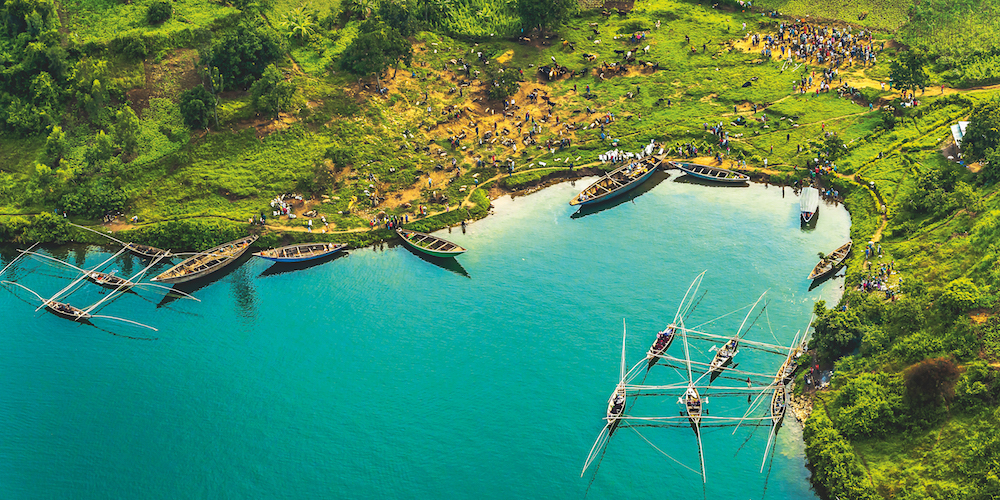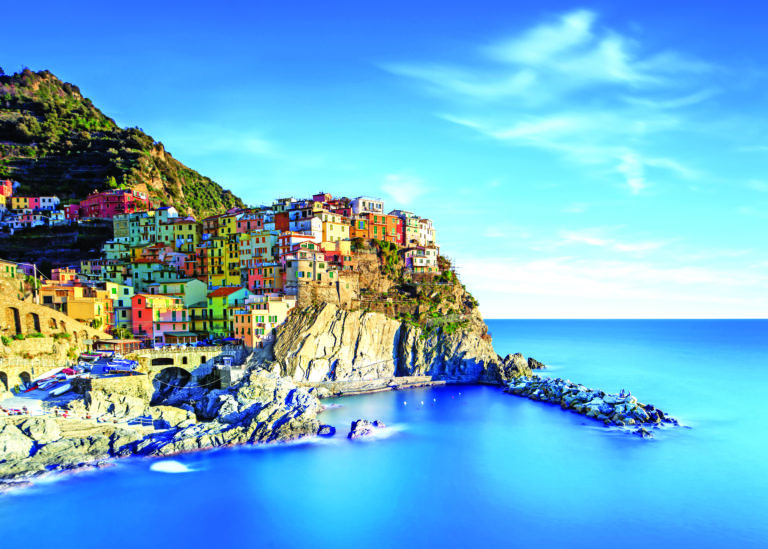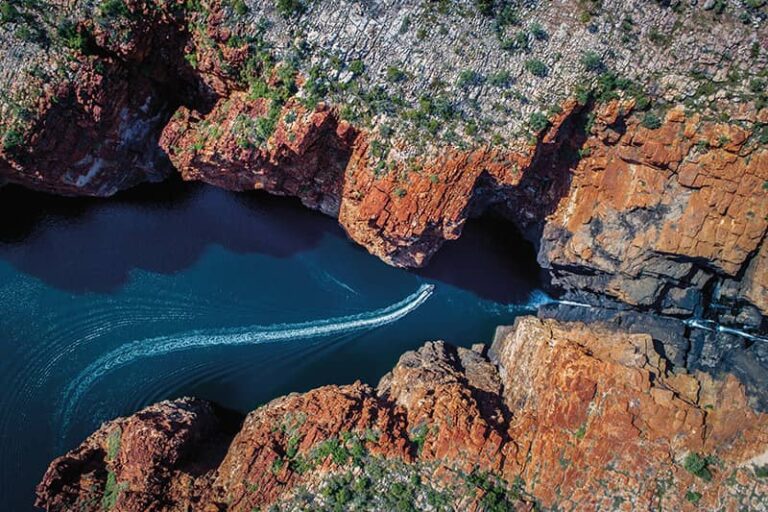Rwanda’s bloody past has been left far behind as its once warring peoples work together to create a peaceful future, with a focus on conserving their environment and its wildlife.
By Kate Webster
Forget the raw, authentic and traditional Africa. Rwanda is unlike other African countries – maybe even unlike any other country in the world. The roads are impeccably maintained, rubbish is nearly non-existent and the feeling of safety is strong. It is refreshing to see a different Africa. A progressive Africa that is quickly moving forward, that is considerate of the environment and conservation, that values the expression of arts and culture and where things are going well. It was a long and painful road to get to this point, however.
A phrase commonly uttered on the clean streets of Rwanda is “love means forgiveness”. If you know anything about Rwanda’s history, you will understand the importance Rwandans place on forgiveness. The twin qualities of forgiveness and love have been the driving force behind the country’s astounding progress and development following the tragic events that occurred in 1994.
The Rwandan genocide, also known as the genocide against the Tutsi, was a mass slaughter of Tutsi people in Rwanda by members of the Hutu majority government. Over a 100-day period from 7 April to mid-July 1994, an estimated 500,000 to 1,000,000 Rwandans were killed, constituting as much as 70 per cent of the Tutsi population.
This widespread slaughter of Rwandans ended when the Tutsi-backed and heavily armed Rwandan Patriotic Front (RPF), led by Paul Kagame, took control of the country. Around 2,000,000 Rwandans, mostly Hutus, were displaced and became refugees. The genocide took place in the context of the Rwandan Civil War, a conflict that had begun in 1990 between the Hutu-led government and the RPF, which largely consisted of Tutsi refugees whose families had fled to Uganda after the 1959 Hutu revolt against colonial rule.
This led to waves of Hutu violence against the RPF and Tutsi following Rwandan independence in 1962. The “Hutu Power” ideology was born as many Hutus reacted with extreme opposition. On 6 April 1994, an aeroplane carrying Rwandan president Juvénal Habyarimana and Burundian President Cyprien Ntaryamira was shot down on its descent into Kigali, Rwanda’s capital. The assassination of Habyarimana ended the peace accords and the genocidal killings began the next day.
The genocide has had a lasting and profound impact on Rwanda and its neighbouring countries. As a result of rapes committed during this period, HIV infection spiked, including babies born of rape to newly infected mothers, and many households were headed by orphaned children or widows. Infrastructure was destroyed, and the severe de-population of the country crippled the economy.
A visit to the Kigali Genocide Memorial provides insight into Rwanda’s harrowing past. Thirty-two-year-old Lydie Mutesi guides me around the memorial. She would have been eight years old at the time of the genocide, just a child. Now a mother with children herself, at times she pauses to regain composure, the pain still evident in her recollections.
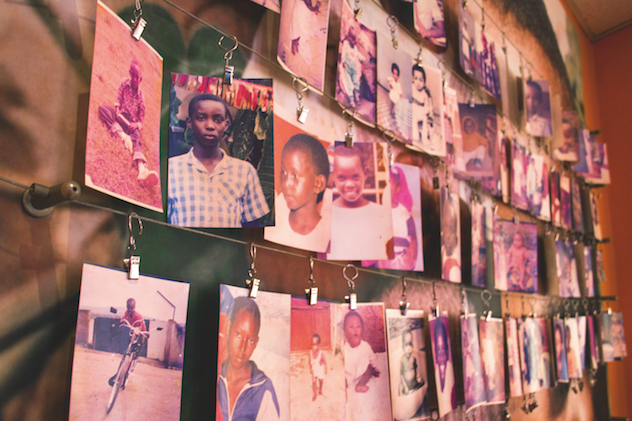
“It will always hurt, but we have to move on,” she confesses.
Walking through the genocide memorial stirs chilling emotions while reading stories of the lives lost and the survivors’ despair, tragedy and courage, as panicked silent screams ring out in deafening imagery. The memorial’s simplicity allows the drama of the story to have maximum impact.
Both sides of the conflict have learned how to ask forgiveness as well as forgive their aggressors, and now work beside each other in rebuilding their communities. Some members from opposite sites have fallen in love with each other and even started families together. Such an inspirational story of reconciliation and reunification is remarkable to witness first-hand.
Ever since the 1994 genocide, Rwanda has moved forward in leaps and bounds. Not only in reconciliation and forgiveness from that fateful event, but in development and conservation.
The name ‘Rwanda’ literally means ‘expanding’, and its capital city, Kigali, takes meaning from something large – fitting for a country that has grown so much in the past 24 years and continues to propel forward.
The sense of community is strong, and everyone is involved in sustaining the country’s movement. Known as ‘umuganda’, on the last Saturday of every month everyone does community work – regardless of their status – to help clean and look after the environment.
Known as the “land of a thousand hills”, green is a word that perfectly describes Rwanda. Not only green in colour, with the rich rolling hills that are ever-present on the horizon, but green in terms of sustainability and conservation. Single-use plastic bags are illegal throughout the entire country and will be confiscated upon arrival. Due to this effective ban and other factors, Rwanda was ranked number three of the greenest destinations of the world in 2015. It has been dubbed the “Singapore of Africa”, and you can clearly see why the moment you arrive in Kigali – it is astonishingly clean by any standards. Alongside the environmental care is the conservation of the wildlife and national parks. Famous for their mountain gorillas, Rwanda has put a great deal of effort into conservation to protect these precious primates.
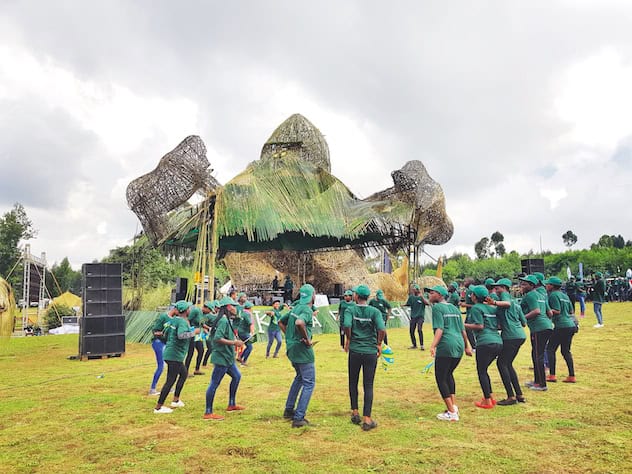
The mountain gorillas are the world’s most endangered ape and are found only in small portions of protected Afromontane forests in northwest Rwanda, southwest Uganda and eastern Democratic Republic of the Congo. The mountain gorilla is only one of many species unique to these forests, which are also home to many wonderful birds, primates, large mammals, reptiles, insects and plants – and also ensure continued water and medicinal plant resources for the local communities. Hidden high among the forested volcanoes of gorilla tracking in Volcanoes National Park in East Africa, the mountain gorilla was mostly unknown until 1902, when two were first encountered by a German explorer and promptly killed. This unfortunately set the tone for the relationship between man and gorilla. For much of the time since, due to deforestation and poaching, it has seemed that the mountain gorilla was destined to be lost to the world again.
That is until the species’ greatest champion, American primatologist and conservationist Dian Fossey, came along. During her time in Rwanda, she actively supported conservation efforts, strongly opposed poaching and tourism in wildlife habitats, and made more people acknowledge the cognitive capacity of gorillas. Author of the 1983 book, Gorillas in the Mist, Dian studied the mountain gorilla groups on a daily basis from 1966 until her death in 1985, when she was murdered in her cabin at a remote camp in Rwanda. Her death remains a mystery, but it has been postulated that her murder was linked to her conservation efforts.
Today nearly half of the world’s 700 remaining mountain gorillas live at the intersection of Uganda, Rwanda, and the Democratic Republic of the Congo in the Virunga Mountains of central Africa. Volcanic slopes here are lush with tropical forests and diverse mammal, bird, and reptile species.
Known as troops, the gorillas live in communities or families of up to 30 individuals. They are led by one dominant, older adult male, known as the silverback because of the band of silver hair down his back, which is otherwise dark fur. Mountain gorillas have longer hair and shorter arms than their lowland cousins, and they also tend to be slightly larger than other gorillas.
Despite the silverback’s impressive shows of physical power, standing upright, throwing things and making aggressive charges as he pounds his huge chest, gorillas are generally calm and not aggressive unless they are disturbed. Female gorillas give birth to one infant after a pregnancy of nearly nine months.
Unlike their powerful parents, newborns are tiny, weighing two kilograms and able only to cling to their mother’s fur. These infants ride on their mothers’ backs from the age of four months throughout the first two or three years of their lives. Infant gorillas are like human children – playful, cheeky and keen to explore. Much of their day is spent playing, climbing trees, chasing one another and swinging from branches.
The best place to witness these infant mountain gorillas is during a visit to Rwanda’s Volcanoes National Park. Consisting of 125km2 of mountain forest and the six Virunga volcanoes, the lush forested slopes of the mountains form an appropriately dramatic natural setting for what is arguably the most poignant and memorable wildlife experience in the world: gorilla trekking.
A permit will set you back USD$1500, which goes straight back into the protection and conservation of the gorillas. It is advisable to hire a porter for your trek, not only for the assistance on your climb, but to help fund a living for the ex-poachers who formerly plundered the national park. It gives them incentive to stay on the anti-poaching path.
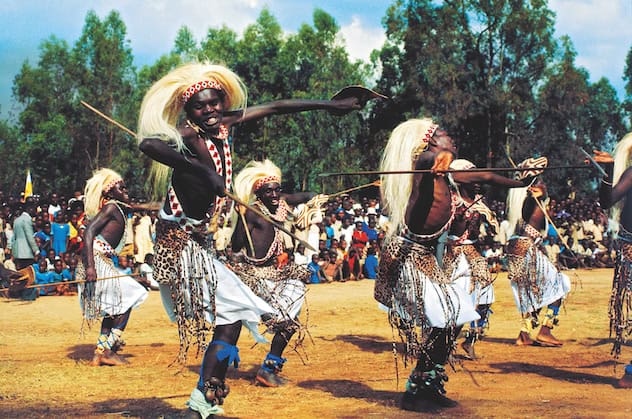
The exhilarating climb to the gorillas’ natural habitat starts off easy and you could be mistaken for thinking you are in for a walk in the park. But the stroll soon turns into a struggle as the forest thickens and before you know it, you are fighting with the dense undergrowth, one foot-strangling step at a time.
As the morning sun rose and filtered across the mountains, the mist slowly lifted like a curtain to unveil the main performance, the gorillas. It is easy to see why Dian’s description of “gorillas in the mist” is fitting. The battle with the vegetation was well worth it. Nothing can prepare you for the impact of emotions upon encountering a fully-grown silverback gorilla, up to three times the size of an average man, yet remarkably peaceable and tolerant of human visitors.
I spend time with the largest gorilla family in the park, the Kwitonda family – which means ‘humbled’ in Kinyarwanda, Rwanda’s official language. Indeed, to spend an hour with this family was truly humbling. A mother clutches her newborn baby as its wide eyes dart around, exploring her surroundings from the safety of her mother’s arms, before heavily dropping into sleep. Nearby, the children of the family play in boisterous bursts and rolling acrobatics. The silverback lies sprawled out, looking relaxed but always aware of what is going on around him. There is a real sense of family, each gorilla with their own personality and place.
Later I am to learn that the baby gorilla I watched was to be named ‘Urugori’ in the annual Kwita Izina, or name-calling ceremony. Urugori is a crown that the women in Rwanda wear as a symbol of motherhood, and also a sign of respect of women in the Rwandan culture.
The name was chosen as a tribute to the mother of the baby gorilla, ‘Kibyeyi’, who is a prolific female in the Kwitonda family. The ceremony of giving a name to a newborn baby has been part of Rwandan culture for centuries, and this tradition has now been passed onto the gorilla families. The ceremony’s main goal is in helping to monitor each individual gorilla and their groups in their natural habitat.
This year saw the presentation of the names chosen for 21 baby gorillas – all born in the past year. The theme of this year’s Kwita Izina is ‘Conservation is Life’, and the activities in the lead-up to the naming ceremony included community projects, educational programmes, the ‘Conversation on Conservation’ workshop and an exhibition.
At the ceremony, baby gorilla names are chosen by a variety of participants, including Rwandan and international officials, local and international conservationists, business leaders, sports personalities, musicians and others.
The Virunga Massif comprises the Mikeno Sector of Virunga National Park in the Democratic Republic of the Congo, Volcanoes National Park in Rwanda and Mgahinga Gorilla National Park in Uganda. In 1981, the mountain gorilla numbers in the entire area had fallen as low as 242. However as a result of conservation efforts such as Kwita Izina, the population of the endangered mountain gorilla in the Virunga Massif increased from to 480 in 2010 to 604 in 2016 – a 25 per cent increase over six years.
To protect anything, you have to care about it, and to care, you have to know that it’s there. When you need to conserve, one of the most important things is education. Nobody is going to fight for it unless they understand it and feel it. To experience Rwanda’s gorillas, to feel the emotions of the Rwandan people and to understand a country that has fought and come so far is a memory that will be etched in my heart and deep in my soul for years to come.


